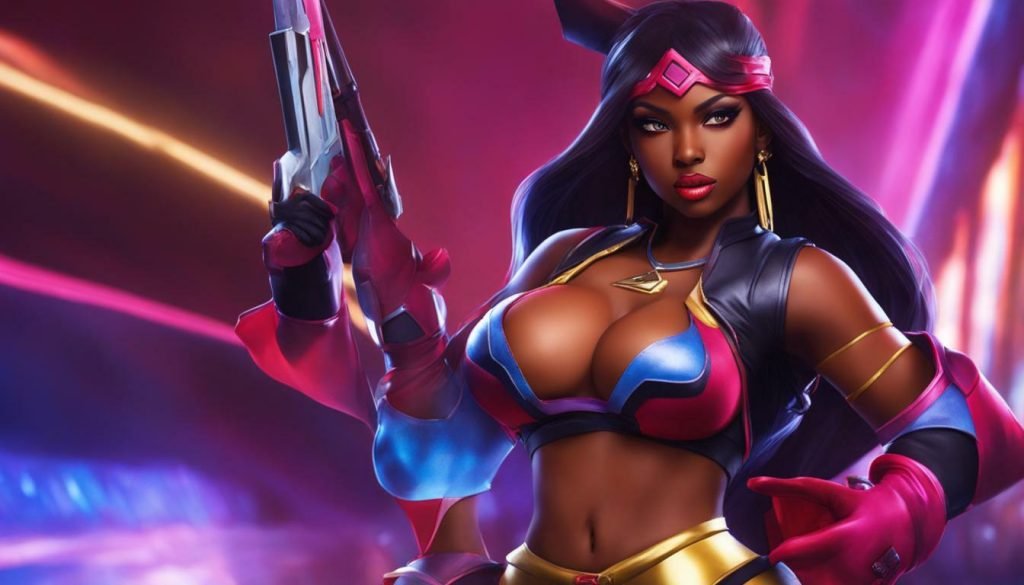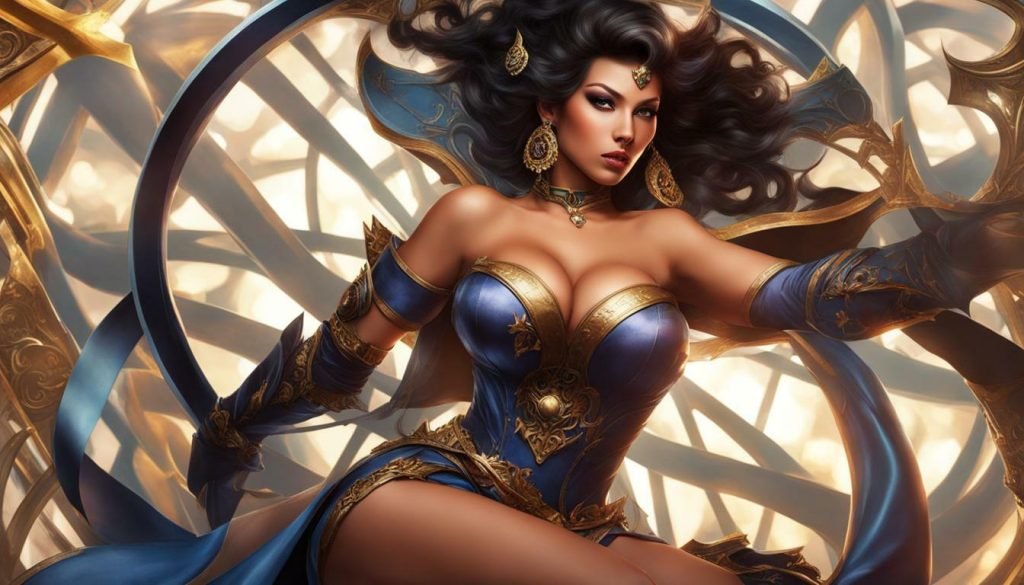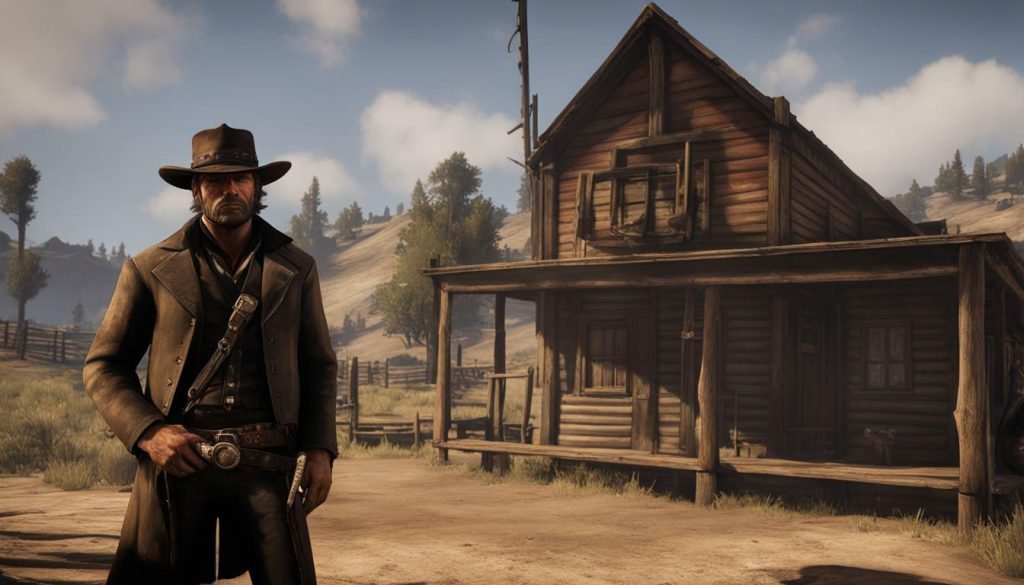In the world of video games, there have been numerous characters that have sparked controversy and divided opinions due to their inappropriate portrayal, behavior, or design. From characters that reinforce stereotypes to those that push the boundaries of good taste, these controversial video game characters have left a lasting impact on gaming culture.
In this article, we explore seven of the most inappropriate video game characters in history, examining the controversies surrounding them and their implications for the industry.
- Jynx from Pokémon faced accusations of racist stereotypes due to its original design resembling blackface actors.
- Tingle from The Legend of Zelda faced criticism for his flamboyant and obsessive behavior, which many fans found tedious and annoying.
- Quiet from Metal Gear Solid 5 drew controversy for her overt sexualization, with her appearance overshadowing her skills as a sniper.
- Irish from Red Dead Redemption disappointed fans with his portrayal of outdated stereotypes, reinforcing negative perceptions of Native American people.
- Abby from The Last of Us Part II faced backlash for her difficult-to-sympathize-with-violent actions and the focus on her muscular physique.
Jynx from Pokémon
Jynx, a character from the popular Pokémon franchise, found itself at the center of controversy due to its original design, which was reminiscent of blackface actors. The character’s appearance, with its dark skin, exaggerated lips, and wide eyes, raised accusations of racist stereotypes and insensitivity. Critics argued that Jynx perpetuated harmful imagery and reinforced harmful racial stereotypes.
The controversy surrounding Jynx’s design led to changes in subsequent Pokémon games and the animated series. The character’s skin color was altered to purple in an attempt to distance itself from the blackface association. However, the impact of Jynx’s original design remains a contentious topic within the gaming community.

Tingle from The Legend of Zelda
Tingle, a character from The Legend of Zelda series, faced controversy for his flamboyant and obsessive behavior, leading to a divisive reception among fans. With his green spandex suit, red nose, and pointy hat, Tingle quickly became one of the most polarizing characters in the franchise. Some players found him endearing and appreciated his quirky personality, while others found him annoying and unnecessary.
The controversy surrounding Tingle revolves around his portrayal as an eccentric character obsessed with forest fairies. His constant insistence on fairy-related activities and his overall demeanor left many fans feeling frustrated and even resentful towards his presence in the games. Tingle’s behavior has been described as over-the-top and attention-seeking, which some players felt detracted from the immersive and serious tone of The Legend of Zelda series.
| Pros of Tingle | Cons of Tingle |
|---|---|
|
|
Tingle’s presence in The Legend of Zelda games is a testament to the diverse range of characters that can evoke strong reactions from players. While some fans appreciate his unique design and his contribution to side quests and items, others find his flamboyance and obsession tedious and irritating. Regardless of personal opinions, Tingle remains a memorable and controversial character in the realm of video games.

“Tingle, a character from The Legend of Zelda series, faced controversy for his flamboyant and obsessive behavior, leading to a divisive reception among fans.”
Quiet from Metal Gear Solid 5
Quiet, a character from Metal Gear Solid 5, incited criticism due to her overt sexualization, with her design prioritizing her appearance over her skills as a sniper and assassin. The character’s portrayal sparked debates about the objectification of women in video games and the prevalence of the male gaze. Critics argued that the decision to dress Quiet in revealing attire, such as a skimpy bikini, undermined her role as a strong and capable character.
Furthermore, the emphasis on her sexualized appearance overshadowed her abilities as a highly skilled sniper, which hindered players from taking her character seriously. The controversy surrounding Quiet highlighted the need for more diverse and realistic representations of female characters in video games that prioritize their skills, personalities, and contributions to the narrative.
It is essential to consider the impact such character design choices can have on players, especially those who may feel excluded or objectified. Representation matters in gaming, and characters like Quiet perpetuate harmful stereotypes and reinforce gender inequality. By addressing these issues and challenging the status quo, the gaming industry has the opportunity to create more inclusive and respectful experiences for players of all genders.

Table: Controversial Video Game Characters
| Character | Controversy |
|---|---|
| Jynx from Pokémon | Inappropriate character design resembling blackface actors, accused of racist stereotypes |
| Tingle from The Legend of Zelda | Flamboyant and obsessive behavior, received a negative reception from fans |
| Irish from Red Dead Redemption | Portrayal of outdated stereotypes and disappointment from fans seeking a reinvented representation of Native American people |
| Abby from The Last of Us Part II | Difficult-to-sympathize-with violent actions, focus on muscular physique |
| Erica from Catherine | Transphobic narrative framing of her identity, controversy within the gaming community |
| Larry Laffer from Leisure Suit Larry | A chauvinistic character attempting to seduce younger women, seen as a relic of sexism in gaming |
Inappropriate Video Game Character Portrayal: Irish from Red Dead Redemption
Irish, a character from Red Dead Redemption, found itself under scrutiny for its portrayal of outdated stereotypes and a missed opportunity to reinvent the representation of Native American people. The game, set in the Wild West era, aimed to capture the essence of the time but unfortunately fell into the trap of perpetuating harmful stereotypes. Rather than offering a nuanced and respectful portrayal, Irish embodies a lazy and cowardly drunkard, reinforcing negative clichés and disappointing fans who were hoping for a more modern interpretation.
The controversy surrounding the Irish reflects a broader issue within the gaming industry: the need to challenge and revise harmful portrayals of marginalized groups. Native American representation in video games has often been laden with stereotypes and caricatures, failing to recognize the rich diversity and complexity within these communities.
By perpetuating outdated views, games like Red Dead Redemption miss an opportunity to contribute to a more inclusive and accurate representation of Native American culture and history.
Redefining Representation
It is essential for game developers to recognize their responsibility in shaping cultural narratives and challenging harmful stereotypes. The industry has made significant strides in recent years, with games like Assassin’s Creed: Valhalla and The Legend of Zelda: Breath of the Wild presenting more diverse and respectful portrayals of cultural identities. These games demonstrate that it is possible to create engaging stories and memorable characters without relying on offensive tropes.
In the future, it is crucial for developers to consult with cultural advisors and engage in dialogue with the communities they seek to represent. By doing so, they can foster a more inclusive and authentic gaming experience that resonates with a broader audience.

In conclusion, the portrayal of Irish in Red Dead Redemption highlights the need for the gaming industry to confront and correct inappropriate character representations. By actively challenging stereotypes and collaborating with cultural experts, developers can contribute to a more diverse and inclusive gaming landscape. It is through these collective efforts that video games can become a platform for positive change and a reflection of our evolving society.
Abby from The Last of Us Part II
Abby, a character in The Last of Us Part II, faced significant backlash for her difficult-to-sympathize-with violent actions and the focus on her muscular physique. While the game sought to provide a complex and morally gray narrative, Abby’s actions, particularly toward the story’s protagonist, divided opinions among players and sparked heated debates.
“Abby represents a departure from traditional video game character archetypes, challenging players’ expectations and forcing them to confront their own biases,” said game developer Neil Druckmann. “However, we acknowledge that her characterization may not have resonated with everyone.”
The controversy surrounding Abby’s character can be attributed to multiple factors. First, her violent actions, including the brutal murder of a beloved character, made it challenging for players to sympathize with her. This resulted in a disconnect between gamers and the characters they controlled throughout the game, leading to frustration and even anger.
Secondly, the emphasis on Abby’s muscular physique became a point of contention. Some players argued that her portrayal reinforced unrealistic beauty standards and perpetuated a stereotypical depiction of strong, muscular women. Others defended the representation as a progressive step towards diversifying character designs in video games.
Due to the controversial nature of Abby’s character, The Last of Us Part II became a lightning rod for discussions surrounding representation, storytelling, and player empathy. The game’s bold attempt to push boundaries and challenge player expectations ultimately ignited a fierce debate about the role and impact of characters in video games.
Table: Summary of Controversial Factors Surrounding Abby
| Controversial Factor | Impact |
|---|---|
| Difficult-to-sympathize-with violent actions | Divided player opinions and sparked heated debates |
| Focus on her muscular physique | Resulted in discussions surrounding beauty standards and representation |
| Representation challenges traditional video game character archetypes | Forced players to confront their own biases and sparked broader conversations about storytelling in gaming |

The controversy surrounding Abby exemplifies the impact that video game characters can have on players and communities. It highlights the power of storytelling and character development in shaping player perceptions and emotions. As the gaming industry continues to evolve, these controversies serve as a reminder of the importance of thoughtful and diverse representation within video games.
Erica from Catherine
For its narrative framing of Erica’s identity, which many people perceived as transphobic, the video game Catherine’s trans character caused controversy. The game’s portrayal of Erica, which reinforces unfavorable stereotypes and spreads harmful misconceptions about transgender people, drew criticism from its creator, Atlus.
The controversy surrounding Erica’s character revolves around the game’s treatment of her identity as a punchline rather than a genuine representation. Many players felt that the game exploited Erica’s transgender status for shock value and failed to approach the topic with sensitivity and respect.
Due to the narrative framing and general lack of understanding and empathy for transgender experiences, critics view the portrayal of Erica in Catherine as being transphobic. The character’s depiction perpetuates harmful stereotypes and contributes to the marginalization and stigmatization of transgender individuals in gaming.

This controversy surrounding Erica’s character in Catherine highlights the importance of responsible representation in video games. It serves as a reminder that developers have a responsibility to accurately and respectfully portray diverse identities in order to create an inclusive and accepting gaming community.
Other Topics on Video Game Characters
- Top 10 Black Video Game Characters
- Top 5 Scottish Video Game Characters
- Top 5 video game characters with glasses
- 10 Most Hated Video Game Characters
- 7 sexiest video game characters of all time
- Top 5 Japanese Video Game Characters
- Top 5 Video Game Character Generator
- Top 80s Video Game Characters
- Top 90s Video Game Characters
- How to Draw Video Game Characters
- 25 Cutest Video Game Characters
Conclusion
The inclusion of inappropriate video game characters has sparked controversy, divided opinions, and highlighted the need for more careful consideration of representation in gaming culture. Over the years, several characters have faced backlash for their portrayal, design, or actions, with players and communities expressing their concerns about the negative impact on the industry.
Jynx from Pokémon, with its original design resembling blackface actors, ignited accusations of racist stereotypes and prompted a reassessment of character design choices. Tingle from The Legend of Zelda faced criticism for his flamboyant and obsessive behavior, deemed tedious and annoying by many fans.
Quiet from Metal Gear Solid 5 was heavily criticized for her overt sexualization, which overshadowed her skills as a sniper and fueled discussions about the objectification of female characters in games. Irish from Red Dead Redemption disappointed fans seeking a fresh and reinvented representation of Native American people due to his portrayal relying on outdated stereotypes.
Abby’s character in The Last of Us Part II faced a divisive response due to her difficult-to-sympathize violent actions and the focus on her muscular physique. Erica in Catherine sparked controversy with the transphobic narrative framing of her identity, raising questions about inclusivity and sensitivity in game storytelling. Lastly, Larry Laffer from Leisure Suit Some people view Larry, a middle-aged chauvinist who is attempting to seduce younger women, as a dangerous remnant of sexism in gaming.
These controversial characters and themes have ignited important conversations about the impact of representation in video games. They have called attention to the responsibility game developers and creators have in avoiding harmful stereotypes, promoting inclusivity, and considering the diverse audience they cater to. Moving forward, it is crucial for the gaming industry to prioritize diversity, representation, and respectful storytelling to create a more inclusive and accepting gaming culture for all players.
